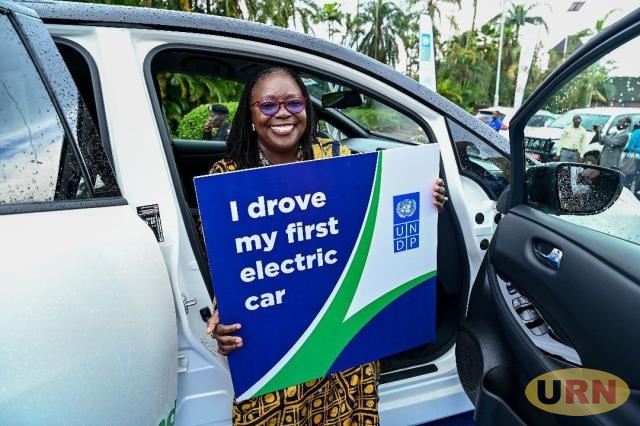
SPECIAL REPORT | THE INDEPENDENT | The world’s electric car fleet continues to grow strongly, with 2024 sales set to reach 17 million. Despite near-term challenges in some markets, based on today’s policy settings, almost 1 in 3 cars on the roads in China by 2030 is set to be electric, and almost 1 in 5 in both the EU and the US.
The new edition of the International Energy Agency’s annual Global EV Outlook report says more than one in five cars sold worldwide this year is expected to be electric.
It says the surge in demand projected over the next decade is set to remake the global auto industry and significantly reduce oil consumption for road transport. The latest Outlook, published today, finds that global electric car sales are set to remain robust in 2024, reaching around 17 million by the end of the year. In the first quarter, sales grew by about 25% compared with the same period in 2023 – similar to the growth rate seen in the same period a year earlier, but from a larger base.
The number of electric cars sold globally in the first three months of this year is roughly equivalent to the number sold in all of 2020. In 2024, electric car sales in China are projected to leap to 10 million, accounting for about 45% of all car sales in the country.
In the US, roughly one in nine cars sold are projected to be electric – while in Europe, despite a generally weak outlook for passenger car sales and the phase-out of subsidies in some countries, electric cars are still set to represent about one in four cars sold.
IEA Executive Director, Fatih Birol speaking at the virtual press briefing said the continued momentum behind electric cars is clear.
“Rather than tapering off, the global EV revolution appears to be gearing up for a new phase of growth. The wave of investment in battery manufacturing suggests the EV supply chain is advancing to meet automakers’ ambitious plans for expansion. As a result, the share of EVs on the roads is expected to continue to climb rapidly. Based on today’s policy settings alone, almost one in three cars on the roads in China by 2030 is set to be electric, and almost one in five in both the United States and the European Union. This shift will have major ramifications for both the auto industry and the energy sector.”
This growth builds on a record-breaking 2023. Last year, global electric car sales soared by 35% to almost 14 million. There have been speculations during the past weeks that there has been a stagnation or a reverse in electric car sales globally. However, the IEA report paints a different picture.
Dr. Biro told journalists that data from his agency shows what he described as a robust increase in electric vehicle sales.
IEA predicts that more than one-fourth of the cars sold across the world will be electric vehicles. “China is the leader. In China, we think this year almost every second car sold will be an electric car. In Europe, more than one-fourth of the cars sold will be an electric car. In the United States, about one out of nine cars sold will be an electric car,” he said
While demand remained largely concentrated in China, Europe, and the United States, growth also picked up in some emerging markets such as Vietnam and Thailand, where electric cars accounted for 15% and 10%, respectively, of all cars sold.
Substantial investment in the electric vehicle supply chain, ongoing policy support, and declines in the price of EVs and their batteries are expected to produce even more significant changes in the years to come.
Electric vehicle sales in the United States of America are growing slower than in China. With the current policies and battery technology IEA says in 2035, every second car sold in the world will be an electric car.
The Outlook finds that under today’s policy settings, every other car sold globally is set to be electric by 2035. Meanwhile, if countries’ announced energy and climate pledges are met in full and on time, two in three cars sold will be electric by 2035.
In this scenario, the rapid uptake of electric vehicles – from cars to vans, trucks, buses, and two- and three-wheelers – avoids the need for up to 12 million barrels of oil per day, on a par with current demand from road transport in China and Europe combined.
What is driving a surge in Electric Vehicles?
Demand for clean energy, energy security, and just industrial policies are some of the drivers in the surge of electric vehicles. “Regardless of climate change, the innovation. The manufacturers want to be the leader in this new technology in every country,” said Birol
The report finds that manufacturers have taken major steps to deliver on the strengthening EV ambitions of governments, including by making significant financial commitments.
Thanks to high levels of investment over the past five years, the world’s capacity to produce batteries for EVs is well positioned to keep up with demand, even as it rises sharply over the next decade.
The pace of the transition to EVs may not be consistent and will hinge on affordability, the report emphasizes. In China, more than 60% of electric cars sold in 2023 were already less expensive to buy than their conventional equivalents.
Dr. Birol says what will happen especially in the battery technologies will be decisive in the growth of Electric Vehicles. IEA is expected to come up with another report about batteries and the spread of EVs.
The Chinese market continues to have a high share of lead-acid batteries in sales, despite government efforts to ban this technology in low-speed EVs and encourage a transition towards Li-ion technology, motivated by environmental concerns associated with the afterlife of lead-acid batteries when not recycled properly. However, in Europe and the United States, the purchase prices for cars with internal combustion engines remained cheaper on average, though intensifying market competition and improving battery technologies are expected to reduce prices in the coming years.
Even where upfront prices are high, the lower operating costs of EVs mean the initial investment pays back over time. Growing electric car exports from Chinese automakers, which accounted for more than half of all electric car sales in 2023, could add to downward pressure on purchase prices. Chinese companies, which are also setting up production facilities abroad, have already seen strong sales of more affordable models launched in 2022 and 2023 in overseas markets.
This highlights that the composition of the main EV-producing economies is diverging considerably from the traditional auto industry.
Timur Gül, Head of the Energy Technology Policy Division at the International Energy Agency says in the first quarter of this year electric car sales in Europe grew by 8% year on year. “Around three million cars were sold over the first quarter of the year globally. Which is equivalent to the total of electric car sales over the entire year in 2020,” said Gül.
The IEA estimates that electric car sales this year could account for more than 20% of car sales up from 18% last year. “We are expecting electric car sales in China to account for about 45% of all cars being sold,” he said.
Ensuring that the availability of public charging keeps pace with electric vehicle sales is crucial for continued growth, according to the report. The number of public charging points installed globally was up 40% in 2023 relative to 2022, and growth for fast chargers outpaced that of slower ones.
However, to meet a level of electric vehicle deployment in line with the pledges made by governments, charging networks need to grow sixfold by 2035. At the same time, policy support and careful planning are essential to make sure greater demand for electricity from charging does not overstretch electricity grids.
The Chinese market continues to have a high share of lead-acid batteries in sales, despite government efforts to ban this technology in low-speed EVs and encourage a transition towards Li-ion technology, motivated by environmental concerns associated with the afterlife of lead-acid batteries when not recycled properly.
Due to their low upfront purchase price, lead-acid battery-powered electric 3Ws remain a widespread transport technology across India and rural China. The role of public charging infrastructure has not kept pace in most countries in Europe
Two Wheeler
The global market for electric two-wheelers (2Ws) shrank 18% in 2023, continuing the downward trend of 2022, which was almost entirely due to supply chain challenges stemming from China’s pandemic-related restrictions.
The decline at the global level was largely driven by a 25% drop in China, which continues to command the vast majority of global electric 2W sales. The Chinese electric 2W market downturn could be explained by the continuing supply chain disruptions related to 2022 zero-Covid policies
One in twenty-five light commercial vehicles sold in 2023 was electric, following the path set by passenger cars The market for electric light commercial vehicles (LCVs) continued to increase in 2023. Global electric LCV sales grew by more than 50%, and the sales share grew to just under 5%.
******
URN
 The Independent Uganda: You get the Truth we Pay the Price
The Independent Uganda: You get the Truth we Pay the Price


